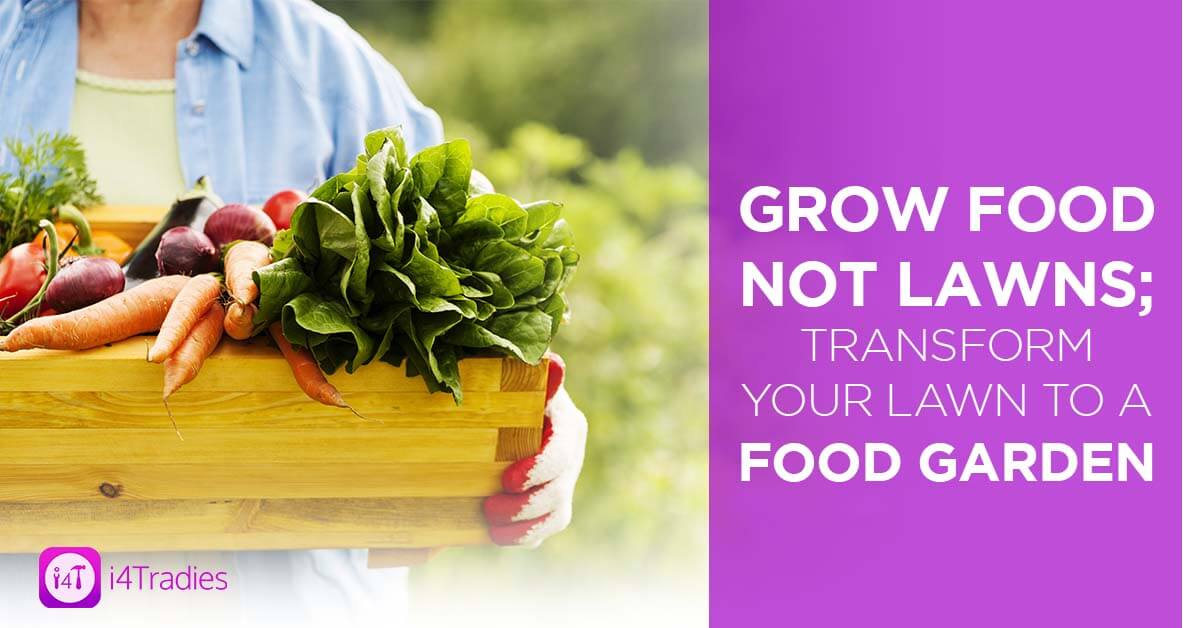When it’s mowing season you see every homeowner up and about oiling their mowers, purchasing fertilisers and scheduling appointments with lawn maintenance professionals.
No matter how big or small the yard is, it requires weekly maintenance and it can be costly. For most of us, rolling down the velvety green carpet on our property feels luxurious.
Imagining the dreadful maintenance process weekly can easily demotivate us to maintain the display, so why not choose to grow food not lawns?
Rather than using your space for display, why not transition the grass to greens that you can use?
In this article, we will discuss how you can grow food, not lawns. From the pros and cons of lawns and food gardens to how you can replace your lawns with gardens.
Let us give you a learning guide to understand the basics of food gardening.
As a beginner, this can be your ultimate guide to converting your lawns/yards to grow food not lawns.
What do you know about Lawns?
The idea of lawns dates back to the 17th century when wealthy estate owners maintained acres of land as part of their homes.
They used different styles of landscaping and maintained the lands with countless servants. Back in the day, it was considered a sign of affluence in many parts of the world.
However, nowadays, many people are shifting their lifestyle to create a more sustainable environment, by choosing foods not lawns.
They are switching their lawns to food gardens, and here is why?
Pros and Cons of Lawns
A healthy lawn can have a good impact on the environment and your house. While it may come as a surprise for many homeowners, there are some pros and cons of lawns.
Pros of Lawns:
- Lawns are created by different types of grass and weeds. This means lawns create oxygen, helping the environment.
- The roots in the soil trap dust and dirt so that the particles don’t overcrowd the air.
- Healthy lawns can trap water and hold the soil in place, preventing erosion.
- In sunny areas where rainfall is low, lawns can make the landscape cooler.
- A healthy lawn adds value to your property.
Cons of Lawns:
- Lawns require regular grass cutting to maintain a clean and healthy space.
- Leaving your lawn unattended for a long time will invite ticks and other bugs increasing the possibility of transmitting serious diseases.
- Lawn mowers are noisy and disturbing.
- Lawns need to be fed regularly, they need good fertilisers.
- Lawns pollute streams and rivers.
- Pesticides used in lawns are harmful to the environment.
- Lawn Maintenance services are expensive.
- Maintaining lawns can be time-consuming.
Even though many around the world still pay a ridiculously high price to maintain their lawns, some would prefer to grow food not lawns.
Why should you consider growing your own food garden?
While there are some pros of lawns for your property, there are better ways you can help the environment and live an eco-lifestyle.
You can do more and grow your food garden, but before that here are the pros and cons of a home food garden.
Pros of Food Garden
- Improves your health and lifestyle.
- Helps you save money on groceries.
- Home gardening can be a great hobby and a good mental and physical exercise.
- Gardening releases a lot of stress.
- Growing a food garden means you get to control the crops
- Vegetables, fruits and herbs add beautiful colour to your home backyard.
- Gardening also gives you a good share of Vitamin D when you are under the sun.
Cons of Food Garden:
- Requires your time and attention
- It is not easy to grow all types of vegetables and fruits
- Requires more research about soil and other elements.
- Pests
- Other injuries while gardening.
Every new skill is challenging so let us help you understand the basics of food gardening.
Learning the basics of Food Gardening
It is important to identify what needs to be done before we get into details. Before you go further into investing space to create your food garden, here is what you need to know.
Everything you need to start your vegetable garden!
There is no better satisfaction than reaping the fruits that you grow. Your home garden needs attention, your care and more importantly the 4 main elements to grow well.
1. Water
The first and most important element for any crop is water. Vegetables and fruits grow perfectly when they get enough water. From the seedling stage, till the plant produces the fruit or vegetable, the plants must be watered frequently.
Tip: Keep in mind that watering too much can result in rotting roots and watering less can cause the plant to stop growth.
2. Soil
Without soil, you cannot grow healthy vegetables or fruits. Choosing the right type of soil for your garden is important.
As the second most important element in your garden you need soil that is loose and well drained. This type of soil allows water and nutrients to be absorbed into the roots.
Using sandy or clay soil will cause water to a standstill resulting in root rot.
Tip: Before you lay out your soil in your garden, test it to find out what your soil needs. Determine your Soil Ph.
3. Light
The next element you need to focus on is light. Not all vegetables need sunlight to grow. While many root vegetables such as carrots, beets and potatoes can survive with only a dose of the morning sun. Most other vegetables require at least 6 hours of sunlight to grow.
Green vegetables such as lettuce, spinach and herbs can thrive in shady areas.
Tip: Arrange your garden in such a way that the sunlight is distributed amply to the vegetables.
4. Nutrients
Every living organism needs nutrients to grow. While your soil will provide organic nutrients including compost or manure, you need to give your plants the necessary nutrients such as potassium, nitrogen and phosphorus.
Tip: Without doing additional work by handpicking the nutrients, you can find pre-packaged fertilisers that provide everything that you need.

Keep in mind that you can completely control your crops.
Food Not Lawns: How to replace your lawn with a food garden.
Converting your lawn to a food garden needs careful preparations, first and foremost, inspect your ground to identify what type of grass is growing and how you can remove the grass to start cultivating your crops.
There are several ways you can remove the grass from your lawn, here is how you can do it:
Shovel – If you have a small space, then you can manually remove the grass with the help of a shovel. The best way to properly utilise the shovel is to use a lawn edging shovel that will allow you to cut easily in the sod.
You can portion the space and use ropes or strings to mark the area you need to remove the grass from.
Sod Cutter – An easy gardening hack is to use a sod cutter to remove the grass from your lawn. If you have a moderately small lawn then you can use a manual sod cutter. Or if your lawn is oversized then use the machine to easily strip away the grass from the ground.
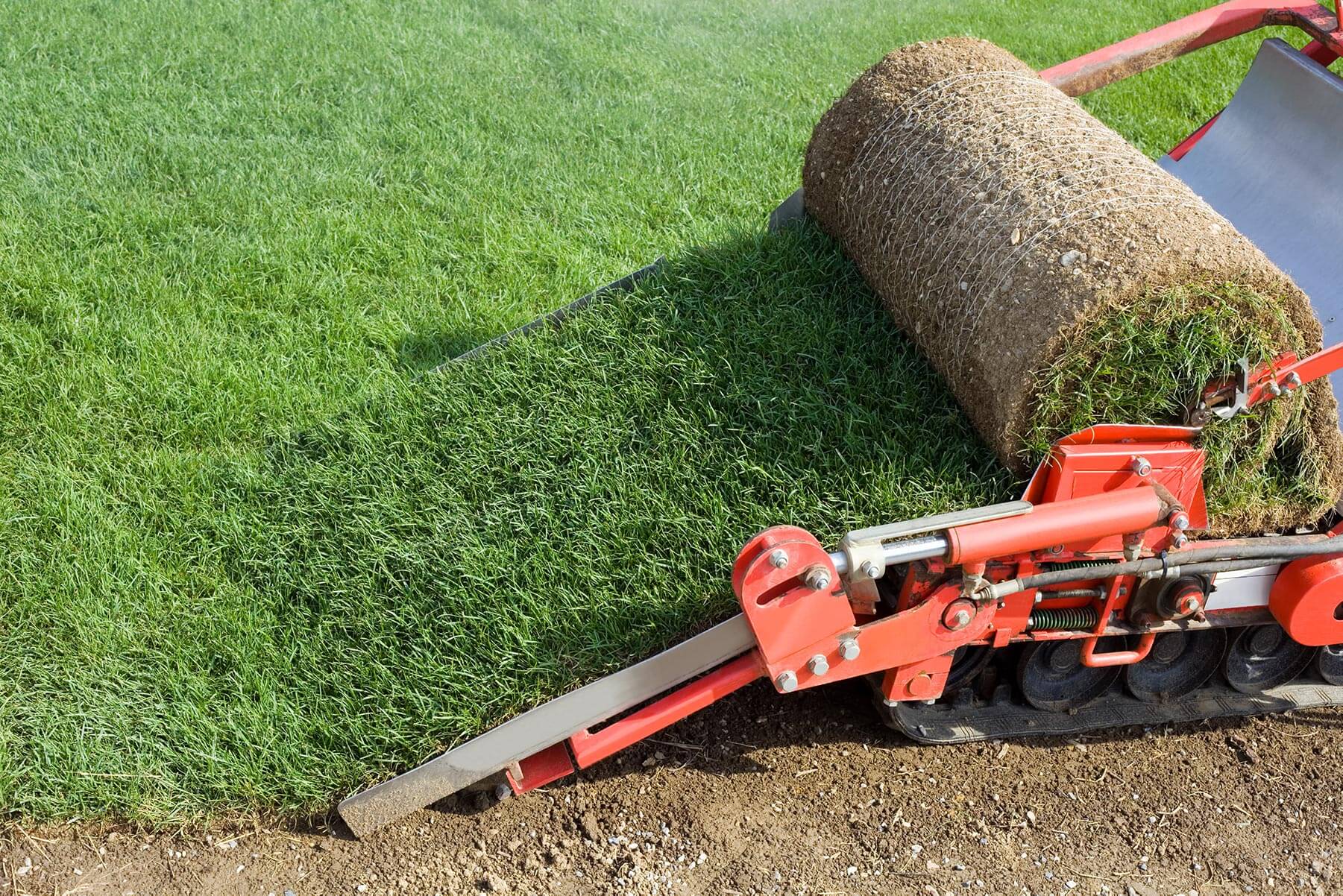
Tillers – If shovelling and sod cutting is not the way you want to go, then you can simply use a tiller to break down the land to cultivate your crops. Tilling the grass is also beneficial for the soil. You can keep the organic nutrients intact while preparing to harvest your crops.
Once you are done tilling you can use a rake to collect the grass remains and clean up the space.
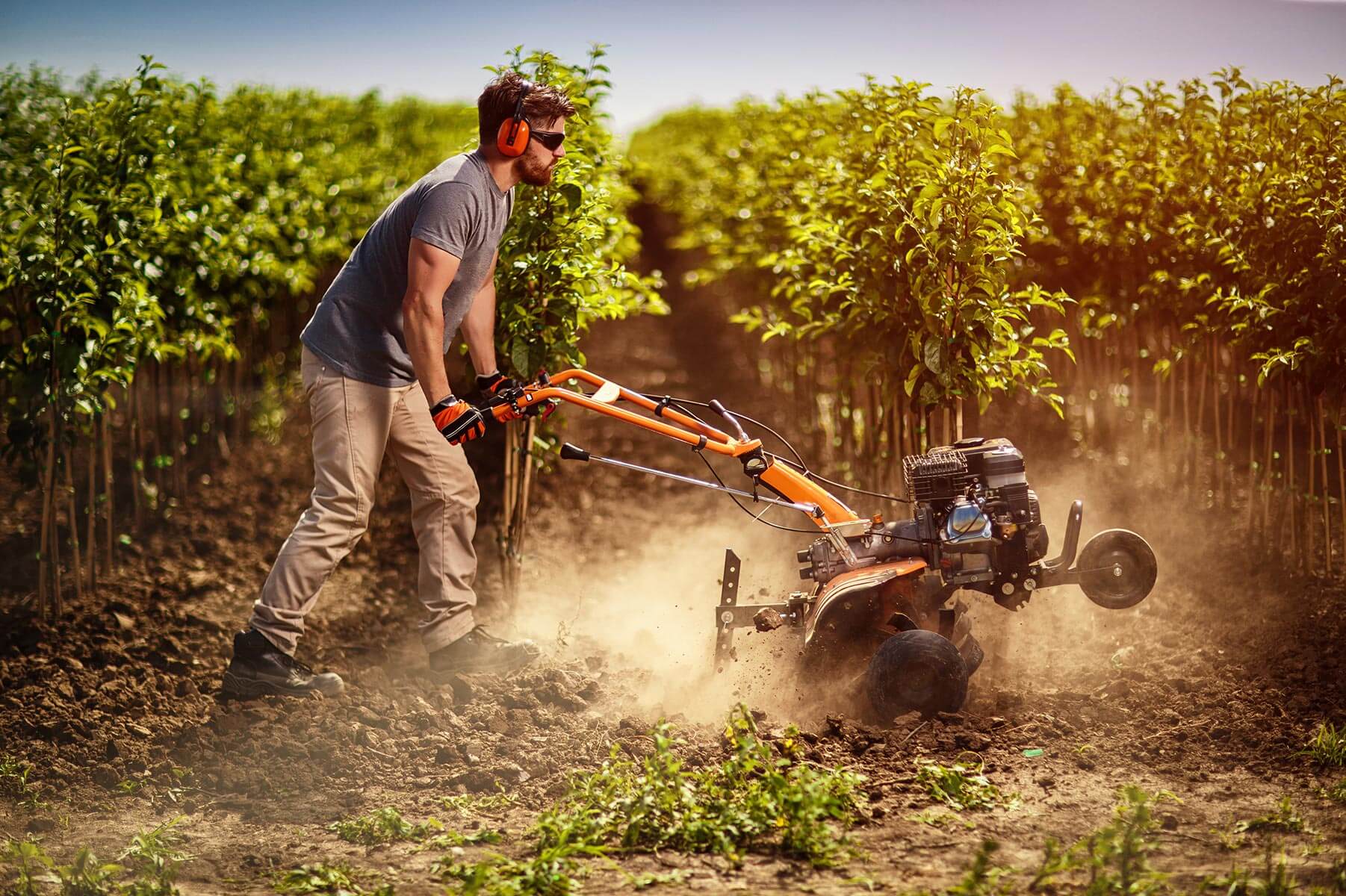
Get Professional Help- If you are not up for a DIY project in your yard, you can simply hire a professional to help you remove the grass.
Tip: With the i4Tradies Web/ Mobile App customers can easily find a Tradesperson by selecting from a wide service category.
Follow these simple steps to Transform your Lawn into a Food Garden:
Let’s start by simplifying the process of transforming your lawn into a beautiful food garden. Here are 3 steps to follow:
- Choose how you will design your garden.
- Select what types of vegetables to grow
- How to care for your garden.
Step 1: Choosing your garden designs:
You can start by dividing your space and deciding how you wish to design the landscape. There are many landscaping designs that you can use as inspiration according to your garden size.
Garden Beds/ Raised Beds
There are two ways you can organise your garden space.
- By directly planting your seeds on the flat ground and
- Planting your seeds in garden beds or raised beds.
By building the ideal bed in your garden, you can divide your space to properly allocate all the vegetables or fruits you decide to grow.
Typically, a raised bed is made with frames such as wood, plastic, stones or other materials. Each raised soil will keep your soil fluff and drained so that your crops can get the required nourishments.
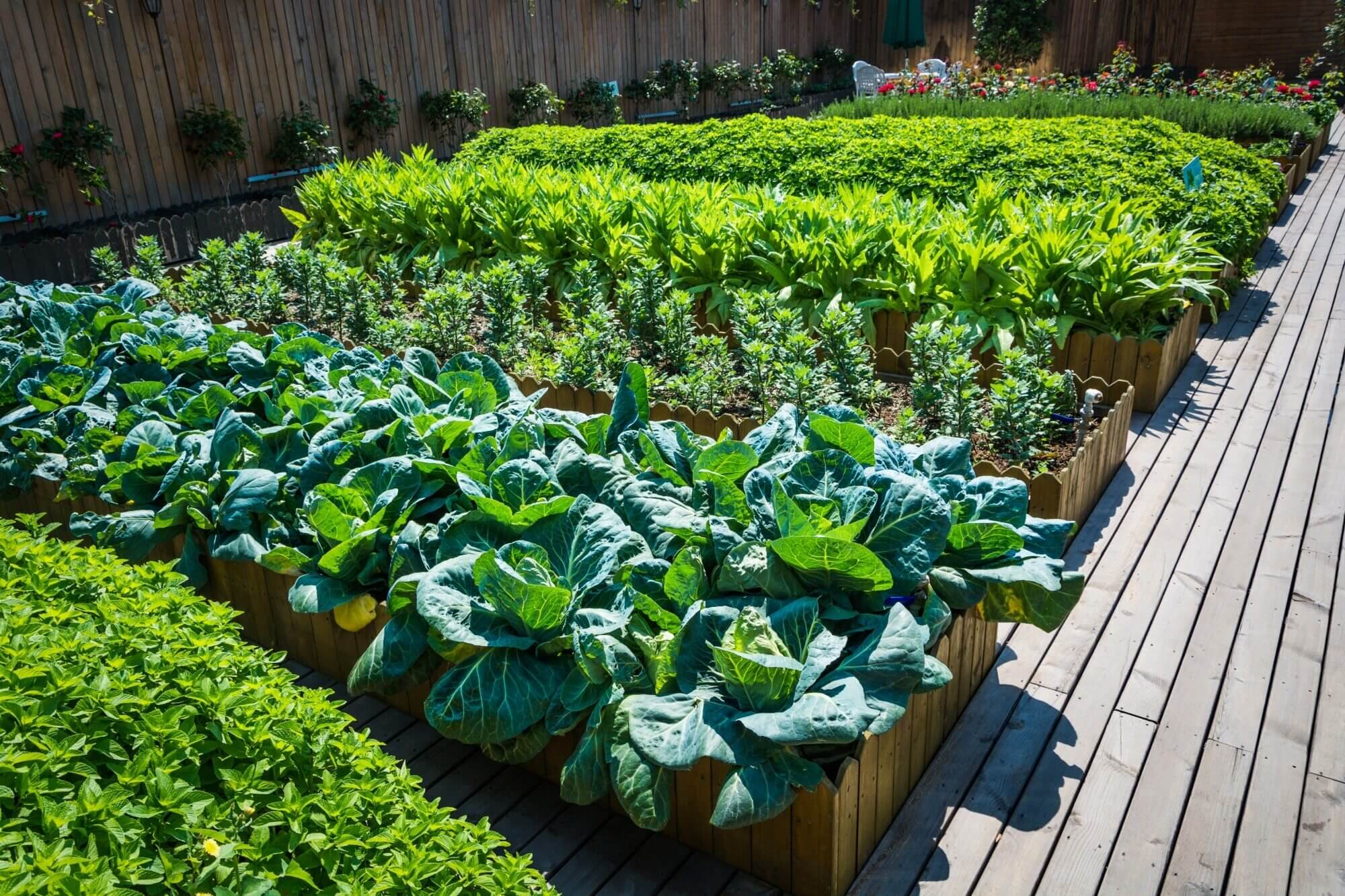
You can make rows from north to south to get the best out of the sun exposure. You can customise the space and create pathways to easily navigate through your garden.
Here are some raised bed garden ideas you can look into.
Containers
Not many homeowners have the luxury of larger space. If you are converting your lawn to a garden then you can utilise the limited space by growing vegetables in containers. You can start with some peas, lettuce, eggplant or tomatoes.
You can also build a shelf to hang some baskets to grow upside-down planters.
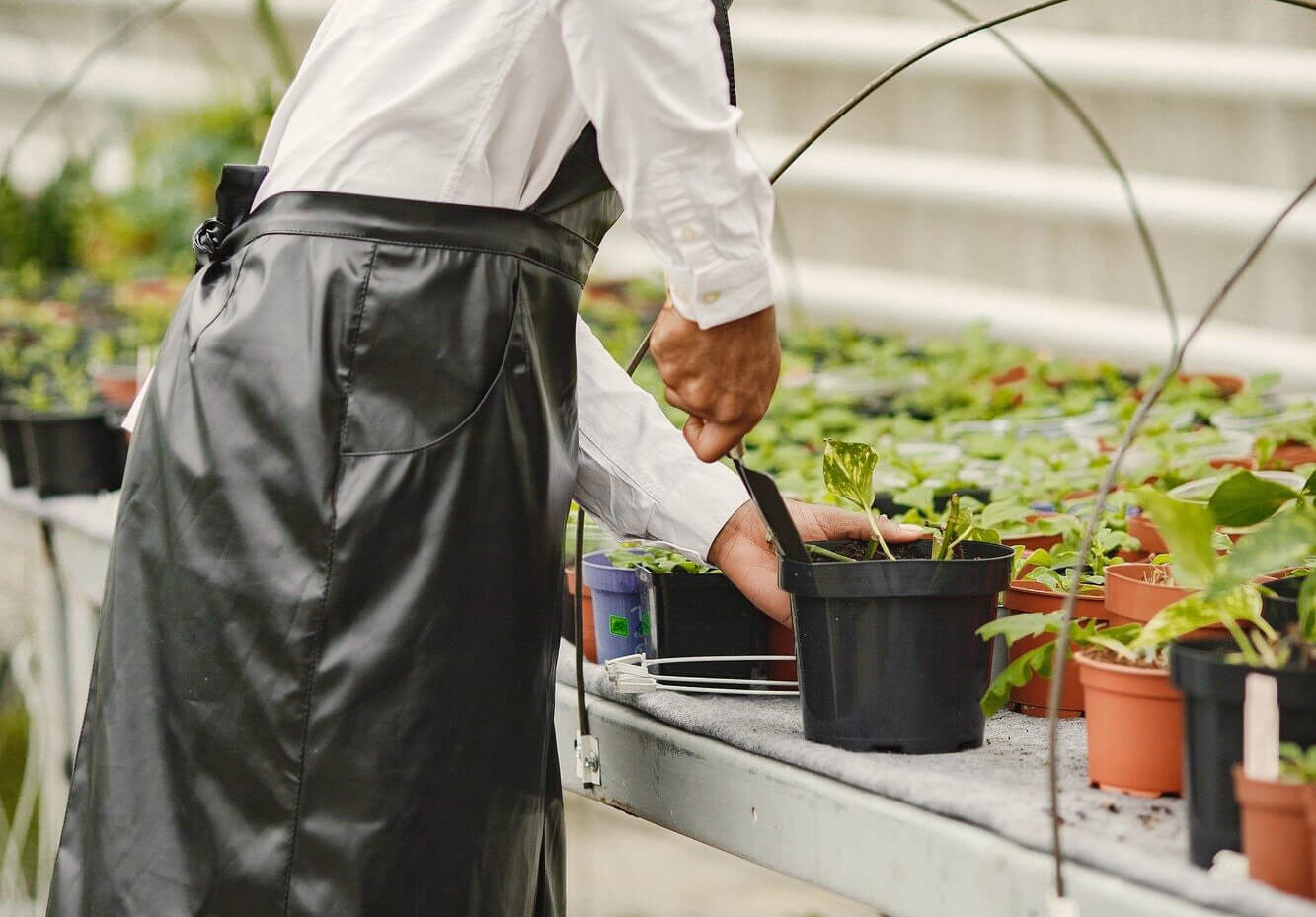
Here are some garden containers ideas to get you started.
Vertical Growing
Another way you can make use of your space is by using vertical gardening methods. You can grow various vine plants such as zucchini and tomatoes. You can add a fence or a pole so that the plants will have support to grow.
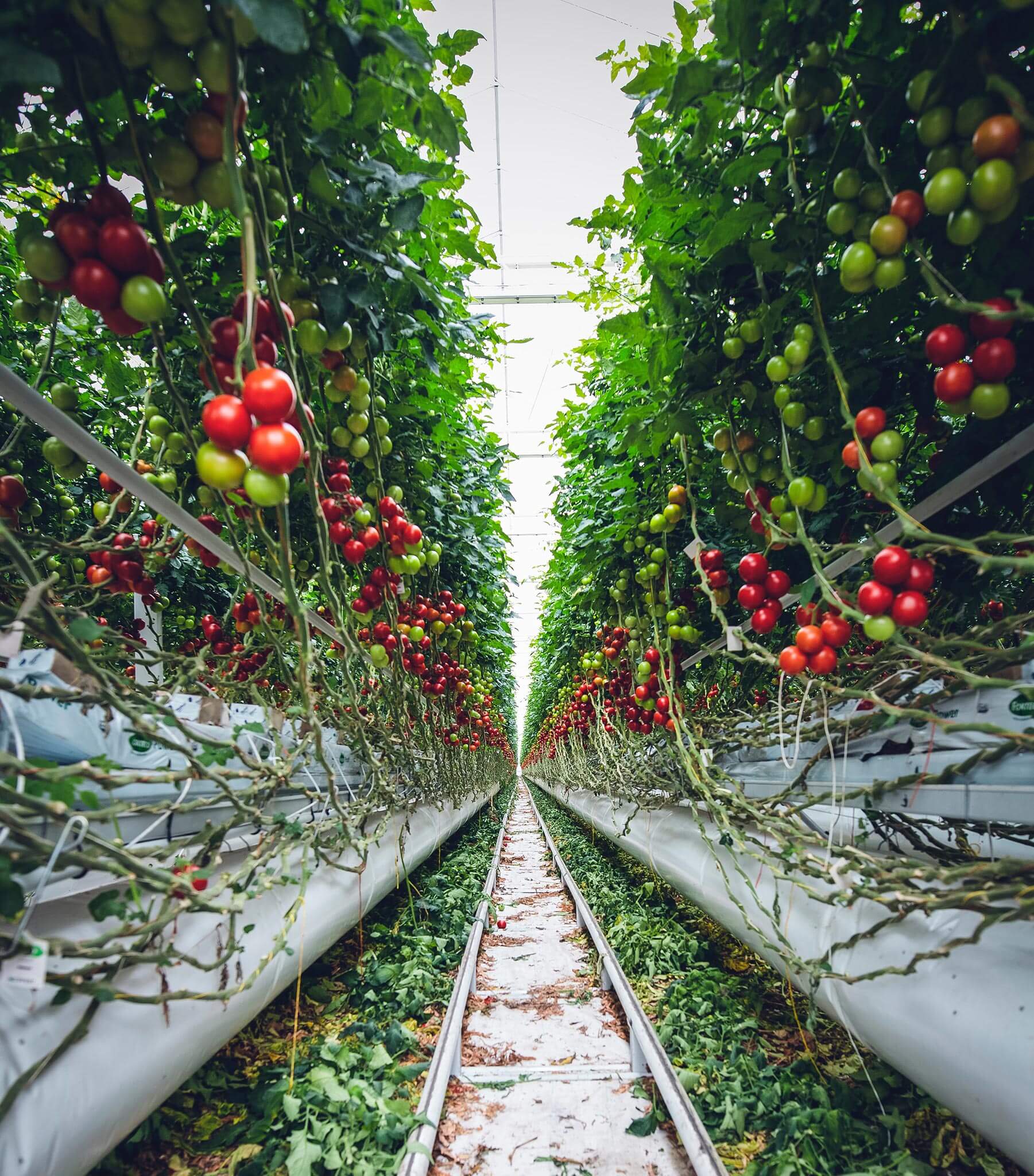
Growing vegetables doesn’t have to be a boring routine. There are many creative ways you can grow your vegetables by using landscaping designs. Author Nikki Jabbour in her book Groundbreaking Food Gardens shares a lot of aesthetic ways to create gardens.
Step 2: Selecting vegetables to grow
There are many types of vegetables and fruits that you can start growing in your backyard and lawn space. However, you should first understand that not all crops can strive in all seasons.
Before you get your hopes up by seeding every vegetable and fruit in your garden, start with making a list of your favourite and easy-to-grow vegetables and fruits.
Start small and keep your list simple, so that you don’t get overwhelmed. Create a good garden plan that will help you organise your schedules.
Learn more about fertilisers and gardening techniques that will work specifically in your region. Before you start your garden, plant flowers nearby so that pollinating insects are easily attracted. Pollination is important for vegetables to grow healthy, therefore make sure that you distribute plants such as marigolds or other flowers.
Suggested Vegetables/ fruits to start your garden:
- Tomatoes
- Peppers
- Potatoes
- Carrots
- Lettuce
- Chillies
- Strawberries
- Pumpkin
- Watermelon
The list goes on. Make sure you pick the ones that you would love to see on your plate.
Once your list is ready, decide when you are going to plant.
There are 2 seasons you should focus on:
- The cool season
- The warm season
Vegetables such as Radishes, peas, broccoli and root vegetables are easy to grow during cool seasons. Ideally during mid-spring.
You can plant tomatoes, corn, cucumbers, eggplants and peppers during the warm seasons. Ideally, warm-season vegetables grow well in late spring.
Another tip to remember between the warm and cool seasons is to continue harvesting plants such as lettuce, and spinach beets to grow them throughout the seasons.
Step 3: How to care for your garden
The quality and longevity of your garden solely depend on how you take care of your plants. Once you have set up your garden you need to start investing some time so that your plants can grow healthy and clean.
Here are some ways to care for your garden:
- Clean your Garden. Make sure that your lawn area does not grow weeds or debris near your food plants.
- Use Mulch to treat your soil. Use mulch as much as possible, and layer the compost and straw around the plants to ensure moisture.
- Water your plants frequently- Make sure not to overwater your plants.
- When using garden tools to dig, rake or seed plants, make sure that you clean them well to avoid transferring bacteria or any type of diseases.
- Maintain your plants. You can deadhead, prune or cull your plants.
- Set up barriers. You can build fences or other types of protective barriers to keep animals away from your crops.
- Provide the right conditions for your plants to grow without being infected by pests and developing the disease.
- Harvest your crops when they are ripe so that the vegetable or fruit does not rot and attract harmful insects.
If you want to know more about how to garden like a professional, you can use some books and online resources to help you guide your gardening process.
Learn from your experience
The most important part about gardening is to be patient, dedicated and follow up with everything that you do. Treat your garden space well and you will see your hard work pay off.
However, there are times when your crops won’t do well, it can be easily discouraging to continue, but make note that every gardener will experience successful harvests and failures.
Each year is different, and you have no control over the weather and environment. So make sure that you look into what went wrong and how you can correct the issues to grow more next year and in the upcoming years.
Keep in mind to always look into the success and learn from your failures.

